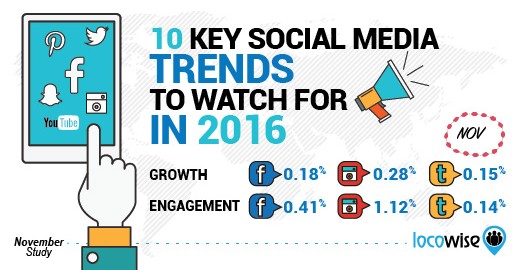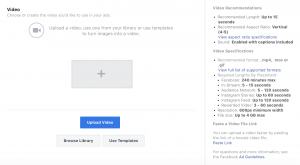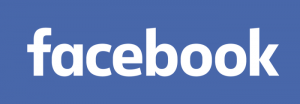With so many people talking about social media these days, there’s bound to be a bit of misinformation thrown into the mix.
It can all get very confusing – especially if you’re new to the game. Even seasoned pros can be misled by all the half-truths floating around.
That’s why we’ve decided to separate fact from fiction by debunking some of the most pervasive myths in social media.

1. Success is measured in followers, right?
Wrong! In the follower-hungry landscape of social media, this is probably the most widely accepted untruth out there. Don’t get me wrong – having a ton of followers can most definitely be a signifier of success, but by no means is it the be-all-end-all of social media.
First of all, on platforms like Instagram you can cheat the system and literally buy followers. This means that a profile’s follower count might not be telling the whole story. And sure, it might make you seem cool on the surface, but those thousands of fake followers are never going to buy your product or engage with your posts in any meaningful way, which brings me to my next point…
Engagement trumps followers. Creating compelling content that a modest number of dedicated fans engage with and share regularly is a better outcome than having a huge follower base that ignores everything you post.
For many marketers, giving your existing fans the killer content that they’re looking for may be a better focus than obsessing over your follower count.
2. My brand needs to be on every social channel
We went over this one in our article on saving time on social media, but it’s worth pointing out again. Too many businesses dive headfirst into the social game and try to make it big on every channel.
The truth is, not every social network may be suited to your brand. Unless you have the time and resources to invest in creating a meaningful presence on every platform, it’s best to pick a few channels to focus on. The idea here is to avoid spreading yourself too thin. Determine which platforms your target market is using the most and spend your time mastering them.
Here’s our guide to figuring out which social media platform is right for your brand.

3. Social media marketing is free
This might be true for regular users, but for brands it’s a different story. The first thing to consider is the amount of time it takes to run your social media – it’s certainly a worthwhile cause for most, but it’s a time investment that takes away from other tasks.
Plus, we’ve seen a continuing trend of falling organic growth and engagement across Facebook and Instagram, which means paid ads are becoming more and more essential.
This shouldn’t put you off from delving into social media. It’s still a great way to connect with consumers and tell your brand’s story. But instead of viewing it as a free lunch, be willing to invest the time and resources into making it count.

4. Only young people use social media
Actually, you’d be surprised how untrue this is. Pew Center shed light on this earlier this year with some eye-opening figures. (Note: their study was based on an American sample population).
Their data showed that 79% of adults aged 30 to 49 are Facebook users, along with 64% of people aged 50 to 64. Even in the highest age bracket, a sizeable 48% of adults 65 and up are on the platform. Meanwhile, 28% of adults aged 30 to 49 use Instagram, and 29% of the same group use Twitter.
While there is a skew towards younger users across all channels, the numbers show that you can still reach mature demographics with social media (especially Facebook).
1. Facebook is dying
Your 14-year-old is wrong – the ‘Book is bigger than ever! It’s got whopping 1.59 billion monthly active users, which would make it the second largest country on Earth. Of those users, more than 1 billion log on every day. In other words, it remains the most popular social media platform by far.
It’s also responsible for a tremendous amount of traffic to websites. Just last year, it overtook Google as the leading source of referrals to media sites.
So should you be on Facebook? Yes. Be on Facebook. Absolutely be on Facebook.

2. Content posted via third-party apps gets lower engagement
Brands using third-party tools to schedule their posts can rest easy. There has been talk of lower reach and engagement rates, but this is (mostly) untrue.
In this study, Buffer concluded that there was no meaningful difference in reach between third-party and native Facebook content, based on their own page’s data and statements from Facebook. LKR Social found the same result in their study.
There are some exceptions, however. For example, automatically generated posts from Spotify do get penalized. The difference here is that these posts are completely automated without any explicit action from the user. If you’re creating your own content, you shouldn’t have a problem.
3. Facebook Ads are a waste of money
You hear this time and time again, but Facebook Ads may actually be one of the most cost-effective forms of advertising out there. The cost to reach 1000 people using Facebook Ads is $ 0.25 – compare that to $ 2.75 for Google AdWords, $ 7.00 for cable TV, and $ 32.00 for newspaper. In other words, they’re insanely affordable.
If you’re already using Facebook Ads and not seeing results, it’s probably time to switch up your strategy. Put extra care into crafting an eye-catching image and optimizing your headlines and copy. Wishpond goes over some great best practices in this article that will help you boost your ad’s performance.

1. More hashtags = more engagement
I’ll admit I was a little surprised when we released our study on hashtags last November. It turns out that Tweets without hashtags perform better than those with hashtags – probably not what you would expect.
It’s difficult to say just why this is the case. Perhaps it’s because hashtags make posts appear ‘spammy’. Whatever the reason, if you’re going to use hashtags you’ll want to avoid clichés and come up with something catchy and meaningful.
Check out our roundup of the most successful hashtag campaigns ever for some inspiration.

2. Twitter is all about text, text, text
Wrong, wrong, wrong! Twitter might be a text-based platform, but the savviest brands know that injecting some imagery into the mix makes for much more alluring content. Plain text just doesn’t catch the eye the way images do.
Remember our rule of thumb – if your post doesn’t have an image attached to it in some shape or form, there had better be a good reason. That’s especially important on Twitter, where tweets rapidly enter and leave a user’s feed. Make sure your content stands out.

3. I should tweet as often as possible
While Twitter tends to be more fast-paced than Facebook or Instagram, that doesn’t mean you should be tweeting everything that comes to mind.
A variety of studies have been done on the ideal tweeting frequency, and most tend to agree that three to five a day nets the highest engagement per tweet. After this, diminishing returns set in and engagement starts to slip.
On the other hand, Track Social points out that you can increase your overall daily engagement (engagement per tweet, of course, falls) by tweeting more. It’s worth experimenting with, but be aware that going overboard can lead to a) coming off as spammy and b) not putting enough thought into each tweet. And both of those lead to c) losing followers.
1. Instagram data can’t be measured
Facebook and Twitter both have built-in analytics tools, but where does that leave Instagram? This is something you might be wondering if you’ve just started using social media to market your brand. Fortunately, the rise of analytics platforms has done away with this problem for good.
2. You need a professional photographer to create great content
Having a professional photographer on your team is certainly an asset, but anyone can learn how to create attractive visual content for Instagram using nothing but a smartphone. The iPhone’s camera is a surprisingly capable tool in the right hands. There are plenty of free resources available on the Internet that can show you how to make the most of it, like this video on composition techniques.
Ultimately, the key to success is identifying what kind of images your audience responds to and having the patience to learn how to create them.
3. Only ‘sexy’ brands do well on Instagram
Some brands have the upper hand on Instagram. That’s a given. You might not be Chanel or GoPro, but that doesn’t mean you can’t carve out your own niche.
Take PayPal for example. Without even having a tangible product to photograph, the tech company has managed to build a 30+ thousand strong following by delivering beautiful lifestyle images with an absolute minimum of branding.
It’s all about framing your brand in a way that fits Instagram’s aesthetic.

Know of any other social media myths that marketers should be aware of? Let us know in the comments below.
Digital & Social Articles on Business 2 Community(29)







